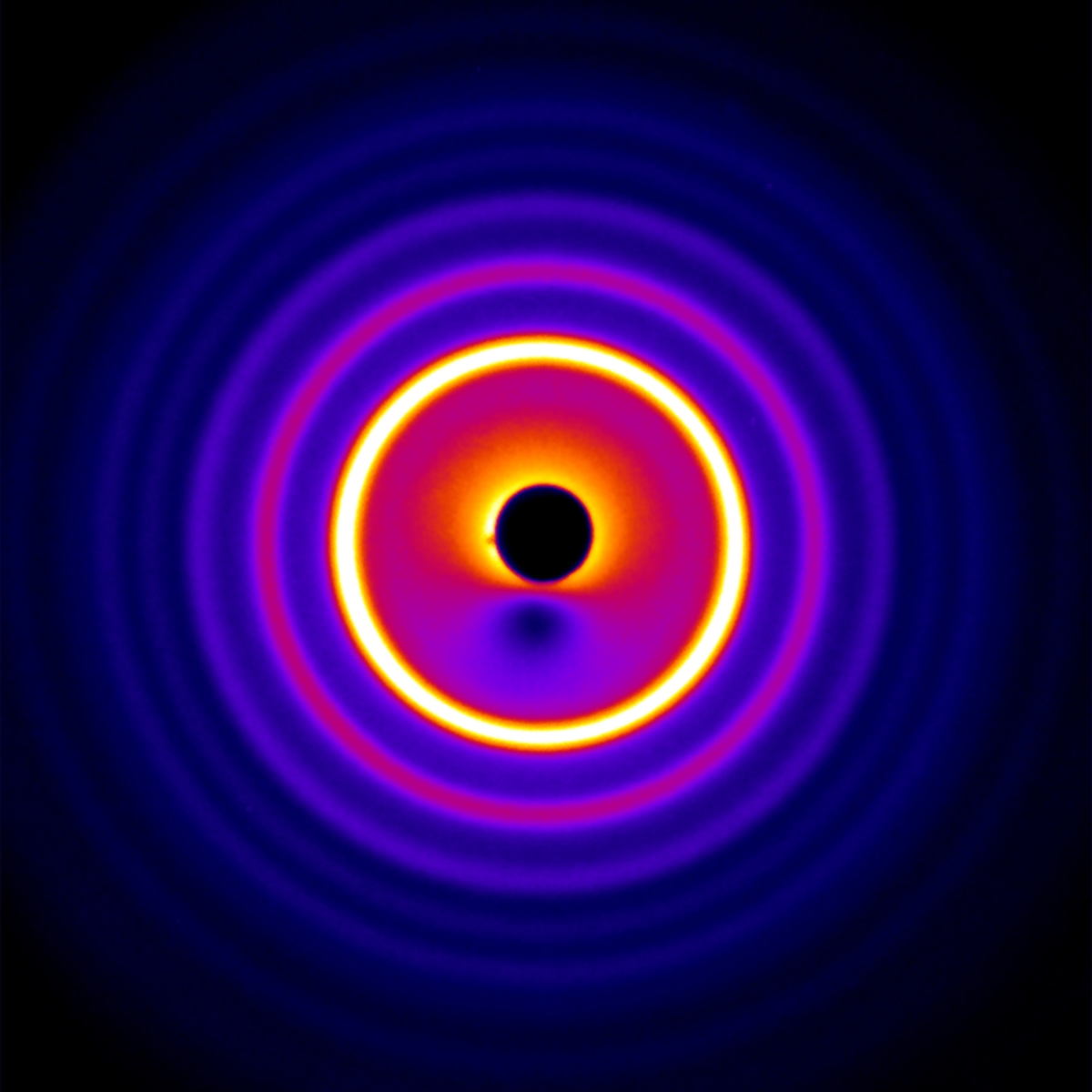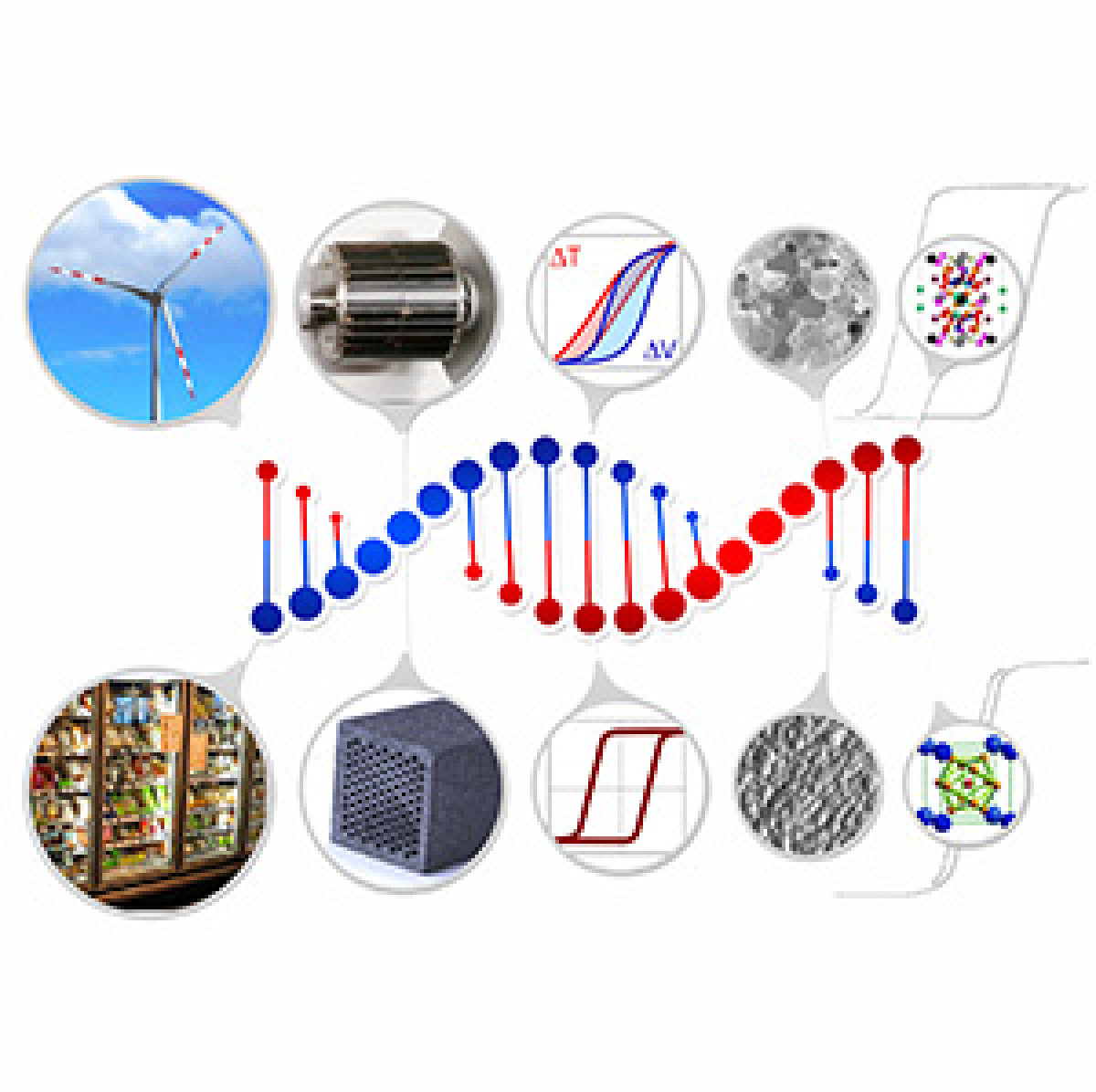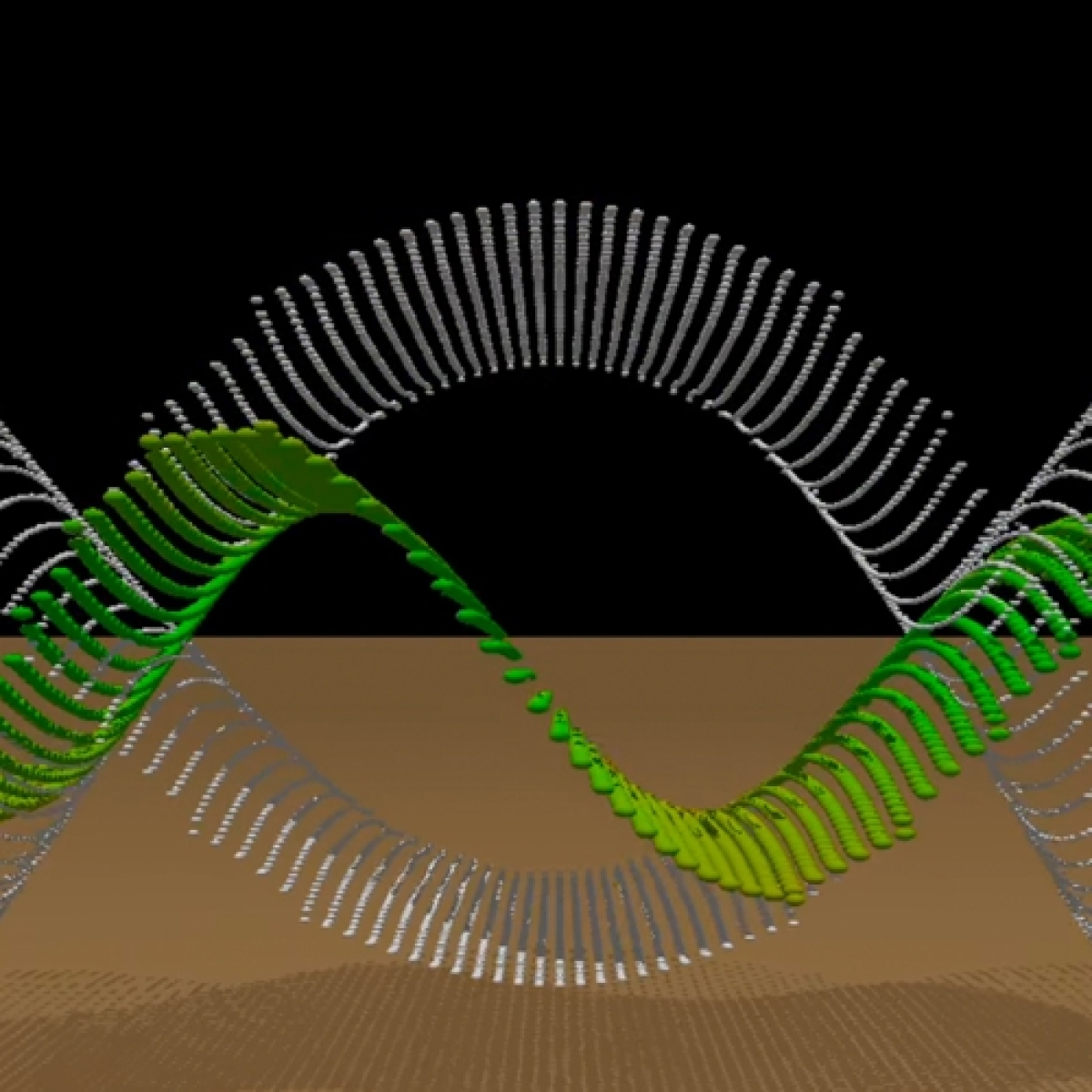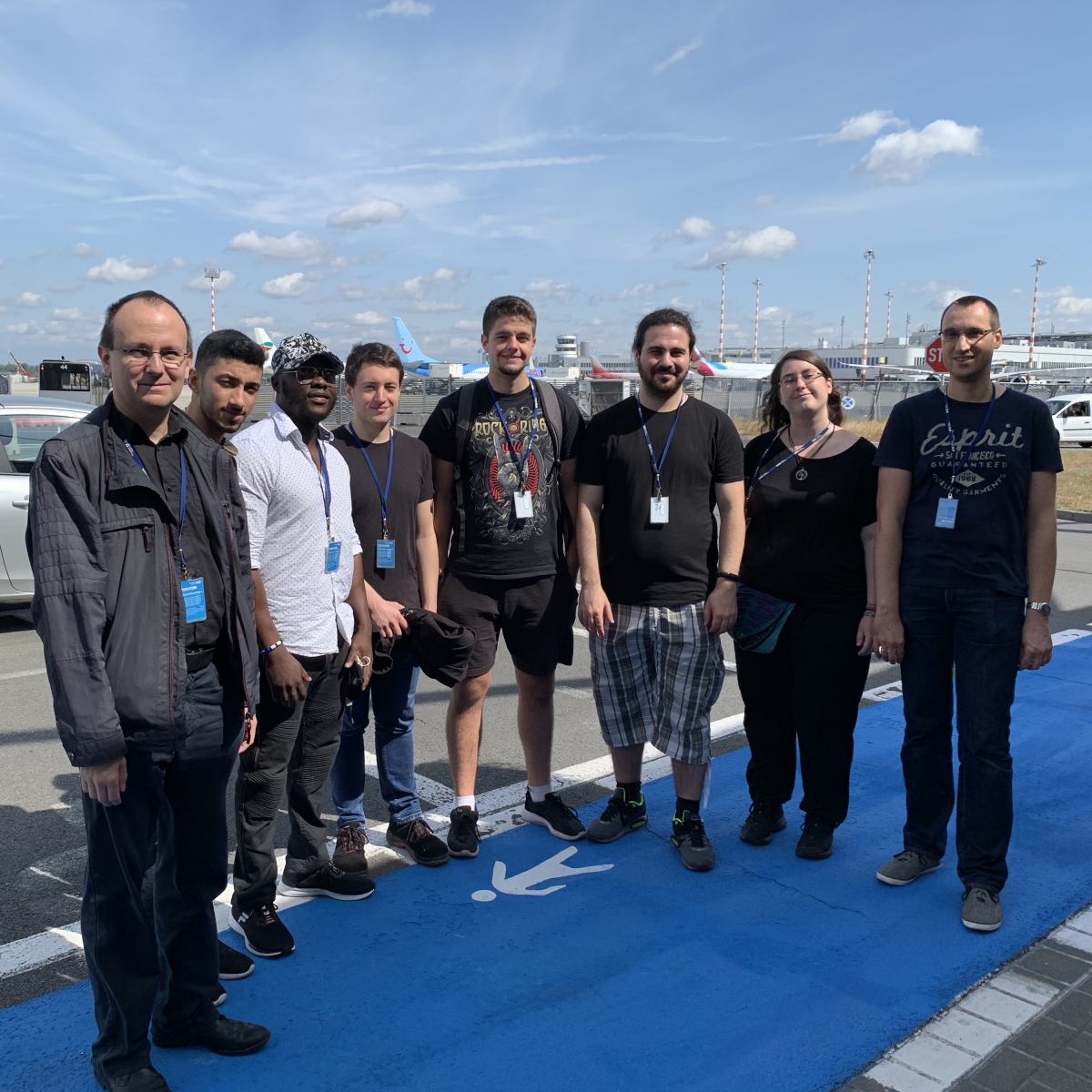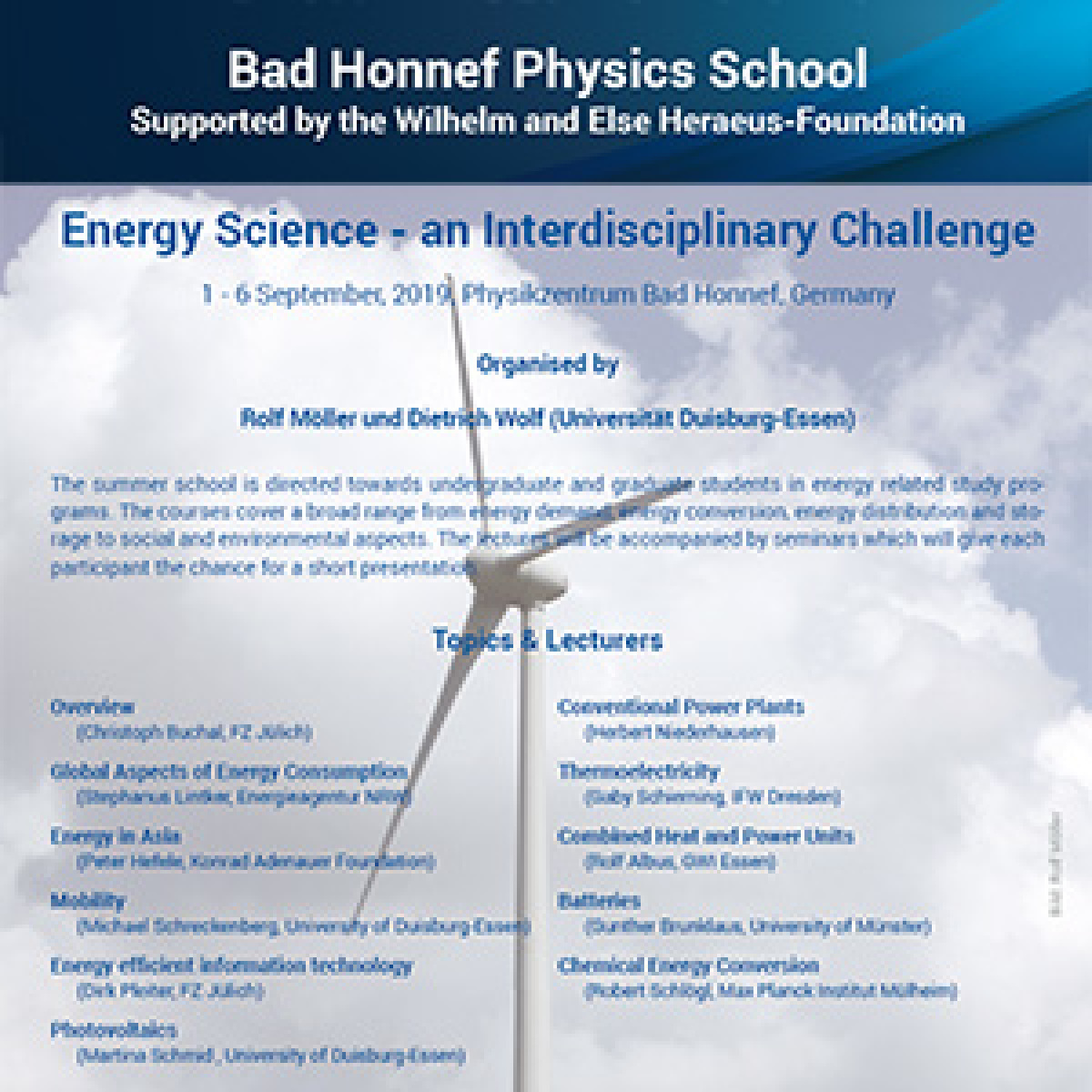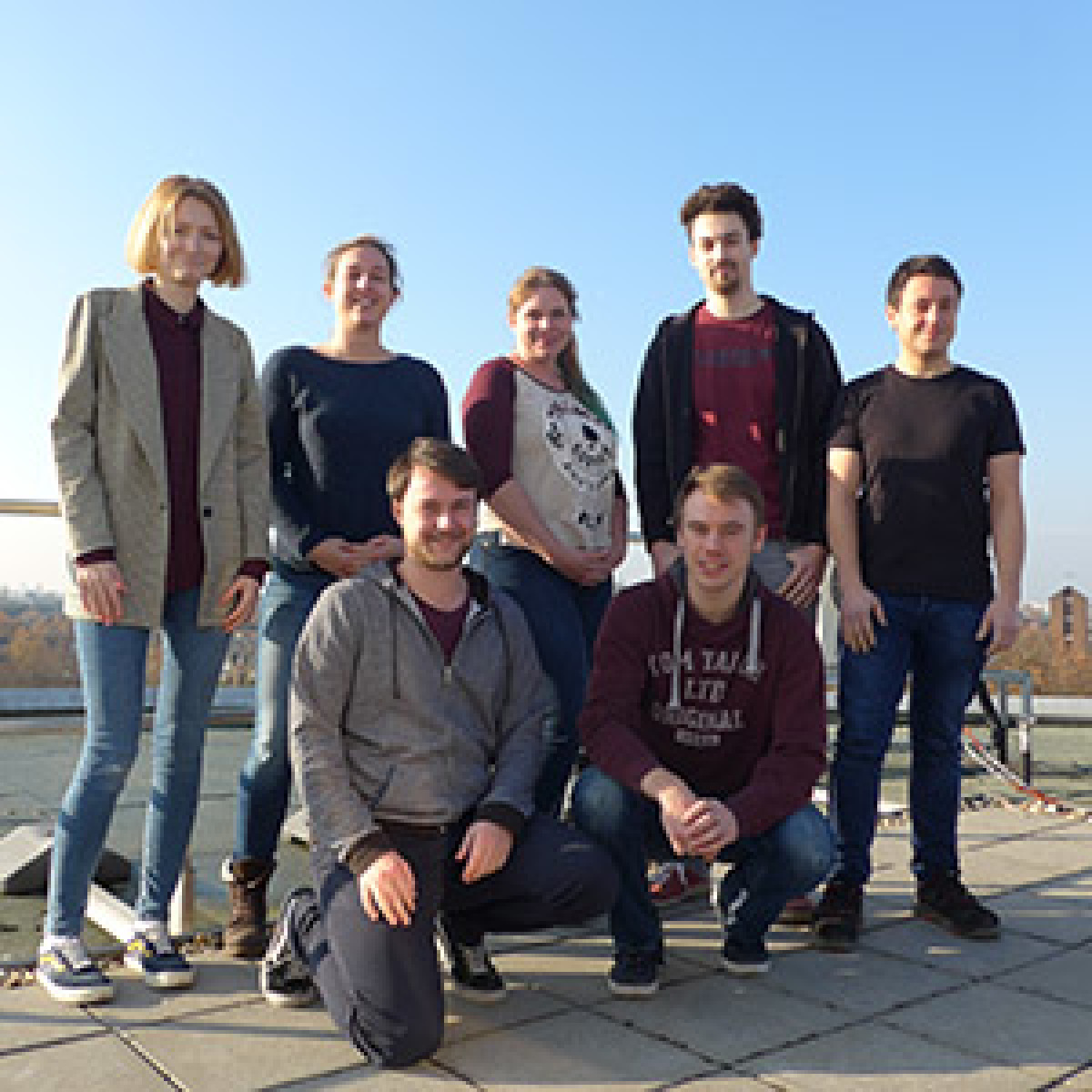News archive 2019
18.12.2019Understanding Metal Insulator Materials - The hot electron's effect
You can't really see them, but you can follow the energy flow like in a flip book: Physicists from the University of Duisburg-Essen (UDE) have investigated the energy transfer in a metal insulator material and published their results in "Physical Review B". In the long term, they could contribute to solving the heat problem in microelectronics through targeted material design.
Laptops and servers would be doomed to heat-death if there were no energy-guzzling and voluminous technology to cool the sensitive circuits. Unwanted, but so far unavoidable waste heat is an expensive problem. If we trace its cause back to the atomic level, we end up with the electron, which makes its way through various materials. But how exactly?
This has been investigated by UDE's physicists from the Collaborative Research Centre "Non-Equilibrium Dynamics of Condensed Matter in the Time Domain". To this end, they investigated a material consisting of alternating thin layers of metal (iron) and insulator (magnesium oxide) using a pump-probe method: A laser pulse injects energy into the system, a short time later an X-ray beam reads a snapshot of how it propagates in the form of "hot electrons" in the material. "If we increase the temporal distance between the two pulses evenly, we can follow the process as in a film," experimental physicist Dr. Andrea Eschenlohr explains.
Reaction in a trillionth of a second
The result: In less than one picosecond (0.000 000 000 001 s), the hot electrons excite the metal lattice; almost simultaneously, the interface between the materials begins to oscillate. Another picosecond later, the insulator also reacts. "The latter surprised us," says Eschenlohr. "We didn't expect these interfacial vibrations to be so important." Theoretical simulations confirmed the results in detail.
Now the physicists want to investigate more complex systems and generalize the results as much as possible. "Over the long term, it might be achievable to tailor a precisely adjusted material mix for different tasks and to solve the problem with waste heat".
The publication was jointly published by the working groups of Prof. Dr. Uwe Bovensiepen, Prof. Dr. Rossitza Pentcheva and Prof. Dr. Heiko Wende.
Image:
Electron diffraction pattern of the sample (false color representation).
Publication:
N. Rothenbach, M. E. Gruner, K. Ollefs, C. Schmitz-Antoniak, S. Salamon, P. Zhou, R. Li, M. Mo, S. Park, X. Shen, S. Weathersby, J. Yang, X. J. Wang, R. Pentcheva, H. Wende, U. Bovensiepen, K. Sokolowski-Tinten, and A. Eschenlohr
Microscopic nonequilibrium energy transfer dynamics in a photoexcited metal/insulator heterostructure
Phys. Rev. B 100, 174301 (2019)
DOI: 10.1103/PhysRevB.100.174301
Further Information:
Dr. Andrea Eschenlohr, +49 203 37 9-4531, andrea.eschenlohr@uni-due.de
Editor:
Birte Vierjahn, +49 203 37 9-8176, birte.vierjahn@uni-due.de
25.11.2019New Collaborative Research Centre established - New magnets for the transformation of energy technologies
State-of-the-art functional materials, such as strong permanent magnets for use in wind turbines and electric motors, or magnetic materials for efficient cooling, are needed to transition to a low emissions future. The German Science Foundation (DFG) has therefore granted €12 million for a new Collaborative Research Center (CRC) called “HoMMage”. This centre will begin its first 4 years on 1st of January 2020 at Technische Universität Darmstadt and UDE.
Strong permanent magnets based on rare earth elements are a requirement for future mobility and sustainable electricity generation. Wind turbines, which are expected to contribute more electricity with every passing year, and electric cars, which need to be both energy and resource-efficient, both rely on strong permanent magnets. A permanent magnet with an increased efficiency of 2 % can increase the range of a car by 20 km. Changing the temperature of a material by the application of an external magnetic field is the principle behind the magnetocaloric effect. This principle will enable us to operate refrigerators and air-conditioning devices quietly, with low energy consumption and without the use of traditional refrigerants, themselves strong greenhouse gases.
Requirements: Affordable, environmentally friendly and efficient.
All of these technologies rely on efficient magnet materials as their key components. However, they often contain raw materials which are rare, toxic and expensive. The researchers of the new CRC 270 HoMMage, which stands for “Hysteresis Design of Magnetic Materials for Efficient Energy Conversion”, are headed by O. Gutfleisch from TU Darmstadt and are searching for new materials which operate close to their physical limits and are made from earth abundant materials.
Together with their colleagues from Max-Planck-Institut für Eisenforschung (MPIE) and Ernst Ruska-Centre for Microscopy and Spectroscopy with Electrons at Jülich Research Centre, the scientists of both universities will develop new processing methods for innovative magnet materials. Material scientists, physicists, chemists and process engineers will work on magnetic materials by manipulating individual atoms but also by deforming massive samples. By linking the experimental and theoretical groups together in one centre they will be able to continuously cross-link their developments. Artificial intelligence, which accelerates materials discovery and the rapid identification of the most promising material combinations, will also be employed in HoMMage.
Understanding the smallest detail
“We want to gain a detailed understanding of what is happening within the material, or in other words, identify the DNA of the magnet”, explains CRC 270-speaker Oliver Gutfleisch, Professor of Functional Materials at TU Darmstadt.” That includes how the structural, magnetic and electronic interactions look like at the atomic level up all the way to the 2 kg of magnets that are placed in the electric motor of a car.” This knowledge will enable adjusting the local and global properties of a magnetic material by additive manufacturing and severe plastic deformation methods. “To achieve this goal, we have developed new ideas for processing techniques on all length scales, so that we can place the precious elements in the bulk magnet only where really needed”, co-speaker Professor Michael Farle from UDE adds.
The activities of CRC 270 HoMMage are embedded in two profile areas “From Material to Product Innovation” and “Future Energy Systems” of TU Darmstadt as well as in the key research area “Nanoscience” of UDE.
Further information:
Prof. Oliver Gutfleisch (speaker), Material Science (TU Darmstadt), 06151 16-22140, oliver.gutfleisch@tu-darmstadt.de
Prof. Michael Farle (co-speaker), Physics (Universität Duisburg-Essen), 0203 37 9-2075, michael.farle@uni-due.de
Editors:
Dr.-Ing. Sonja Laubach, TU Darmstadt, 06151 16-22153, laubach@fm.tu-darmstadt.de
Birte Vierjahn, Universität Duisburg-Essen, 0203 37 9-8176, birte.vierjahn@uni-due.de
12.08.2019Standing waves that won’t stand still
And yet they move: An international team of scientists involving physicists from the Center for Nanointegration (CENIDE) at the University of Duisburg-Essen (UDE) has observed a new phenomenon: They have generated standing waves – which travel. The results of their research have been published in the scientific journal "Physical Review B" including videos of the effect.
09.08.2019Field trip to Düsseldorf Airport
On August 07th, seven students visited Düsseldorf Airport together with Dr. Florian Mazur from research group Schreckenberg. Here, they were able to experience the logistical processes studied in the lecture “Physics of Traffic 2” (Airplane Traffic) at an international airport and see live on site what an important role physics plays for aviation, making the theory from the lecture more tangible and comprehensible for the participants.
After the mandatory security check a bus tour across different areas of the airport was taken. Take-offs and landings, including the Airbus 380-800, the world's largest passenger aircraft, were witnessed up close. Another highlight was the observation of the attempts to repair an engine of a Delta Air Lines Boeing 767-400 in order to carry out the scheduled flight to Atlanta. In the end, however, the attempts were unsuccessful: flight DL 91 had to be cancelled.
The field trip has become an integral part of the lecture "Physics of Traffic 2” (Airplane Traffic) and is offered every semester.
23.04.2019Bad Honnef Physics School - Energy Science - an Interdisciplinary Challange
The summer school is directed towards undergraduate and graduate students in energy related study pro-grams. The courses cover a broad range from energy demand, energy conversion, energy distribution and sto-rage to social and environmental aspects. The lectures will be accompanied by seminars which will give each participant the chance for a short presentation.
19.02.2019Students from the AG Wurm were selected for an experiment on a stratospheric balloon!
Four years after a participation at REXUS a team of students from AG Wurm is again successful with the application for the REXUS/BEXUS program of DLR, SNSA and ESA.
REXUS/BEXUS stands for rocket and balloon experiments for university students. The students applied in October 2018, in December they were invited to a selection workshop and selected as one of the four teams for BEXUS29.
The launch is planned for the end of October 2019 in Kiruna (northern Sweden). Now the team is already heavily involved in preparations for the first meetings in February at DLR in Oberpfaffenhofen. The experiment sees itself as Arise's successor, and the students are trying to better explain the results from the ISS.


